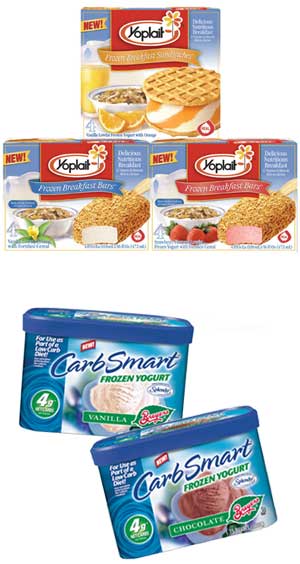
Frozen yogurt for breakfast? Frozen yogurt for carbohydrate-conscious dieters? Could this segment of the frozen desserts industry actually be rebounding from its downward spiral of the late 1990s? The answer is: Yes!
When FDA abolished the standard of identity for ice milk in September 1994, a term the industry believed was not very appealing to consumers, it cleared the way for the marketing of ice cream products with descriptors such as reduced fat, low fat and light. These terms came to fruition a year earlier as a result of the Nutrition and Labeling Education Act (NLEA). At the same time that the term ice milk was abolished, FDA expanded its list of approved ingredients and technologies for making ice cream, enabling manufacturers to greatly enhance the quality of better-for-you ice cream.
All of this legislative activity had a negative effect on the frozen yogurt industry, as typical frozen yogurt users were those who wanted a lower-fat, lower-calorie frozen treat. With ice cream coming in lower-fat and light varieties, frozen yogurt was no longer that special.
According to a hot-off-the-presses report from Packaged Facts (www.marketresearch.com)The U.S. Market for Ice Cream, Related Frozen Desserts, and Frozen Noveltiesfrozen yogurts sales experienced an average annual decrease of 5.6% from 1999 to 2003.
"Last year ended with frozen yogurt sales, retail and foodservice combined, at about $1.4 billion," says Don Montuori, acquisitions editor at Packaged Facts. "But the good news is that this category is poised for some growth. In fact, frozen yogurt sales are projected to grow almost 1% annually for the next five to seven years. This does not sound like much, but compared to the double-digit declines of less than 10 years ago, this is great news."

"Consumers' renewed interest in better-for-you products, which frozen yogurt products tend to naturally be, is helping this dying category become alive again," Montuori says. "We are already seeing it with some of the new products coming out. There had been very few frozen yogurt introductions during the past decade, yet in the first half of 2004, there have been some real noteworthy innovations."
Indeed there has been. One really innovative product actually is creating an entire new frozen dessert category. It is, frozen yogurt formulated for breakfast. CoolBrands International Inc., Toronto, Canada, now offers Yoplait Frozen Breakfast Bars, which combine all the goodness of yogurt, fruit and cereal in a form that is fun, easy and delicious. It's like eating ice cream for breakfast, yet each bar is rich in calcium with 12 vitamins and minerals. CoolBrands' lineup of Yoplait Frozen Breakfast Bars includes three flavors of frozen yogurtVanilla, Strawberry and Vanilla Orange Swirl-covered with crunchy fortified cereal. USDA has actually approved Yoplait Frozen Breakfast Bars for use in all U.S. public schools as part of the Child Nutrition Program.
Good Humor-Breyers, Green Bay, Wis., likely today's most aggressive lower-carbohydrate ice cream marketer, believes that carbohydrate-conscious consumers are also going to have a renewed interest in frozen yogurt. Earlier this month the company rolled out Breyers® CarbSmart Frozen Yogurt, the first frozen yogurt for use as part of a low-carbohydrate diet to hit supermarket freezers nationwide. Available in vanilla and chocolate, the new products contain 4g net carbs (total carbohydrates minus sugar alcohols and fibers), 90 calories and 4.5g of fat per half-cup serving. The product is said to have just a hint of the tangy taste of yogurt. A single serving also contains 10% of the Daily Value for calcium.
As more consumers jump on the health and wellness bandwagon, the opportunities for frozen yogurt increase. When planning your product line up for 2005, think yogurt . . . the frozen way!